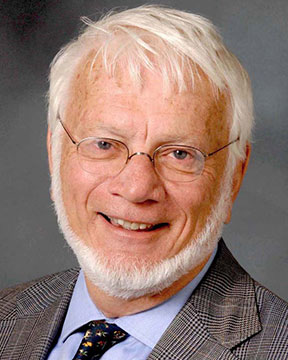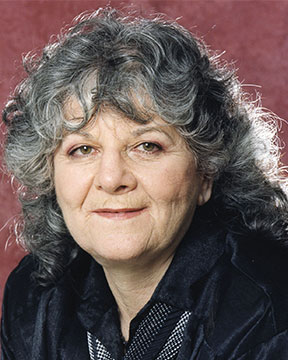ORALS
SESSION: ManufacturingTuePM1-R4
Biomechanics / Biomedical engineering | Mamalis International Symposium on Advanced Manufacturing of Advanced Materials and Structures with Sustainable Industrial Applications |
| Tue Nov, 6 2018 / Room: Sao Conrado (50/2nd) | |
| Session Chairs: Tetiana Prikhna; Jeremy Ramsden; Session Monitor: TBA |
14:50: [ManufacturingTuePM107]
Spherical Depth-sensing Indentation in a Liquid Environment: Toward Cardiac Tissue Characterization Jean-philippe
Jehl1 ;
Richard
Kouitat Njiwa2 ; Pablo
Maureira
3 ;
1Institut Jean Lamour - Université de Lorraine, Nancy, France;
2Institut Jean Lamour (UMR 7198 CNRS-Université de Lorraine), Nancy, France;
3INSERM U961, Nancy, France;
Paper Id: 185
[Abstract] Accurate descriptions for the mechanical behavior of human organs and tissues are required for many clinical applications. They are used for the simulation of surgical procedures (internal training and learning in continuing education) [1, 2], to integrate virtual reality systems, in engineering tissue [3], and in finite element modeling of different organs. The determination of the mechanical properties of soft biological materials is of great interest for imaging, where these material properties can be used to distinguish healthy and pathological tissues [4]. Mechanical tests are carried out to study the mechanical behavior of biological tissues [5], which include different modes of strain compression, tension, and shear. This work proposes to use spherical depth-sensing indentation experiments for the characterization of heart tissue. This tissue dries up and dies quickly, therefore a liquid environment is necessary to characterize its mechanical behavior. The spherical depth-sensing indentation has recently been adapted to operate in such an environment [6]. The experimental protocol and the method of analysis of the obtained results must be rebuilt. The presented work pinpoints the difficulties according to the tests for the cardiac tissue, and proposes some techniques to circumvent these issues. Characterizations of the cardiac tissue are obtained with theory of linear elasticity and nonlinear elasticity. The latter would appear more appropriate to describe the cardiac tissue response under a wide range of deformation.
References:
[1] Misra S, Ramesh KT, Okamura AM. Modeling of tool-tissue
interactions for computer-based surgical simulation: a literature
review. Presence-Teleop Virt 2008; 17: 463-491.
[2] Perrenot C, Perez M, Tran N, Jehl J-Ph, Felblinger J, Bresler L, Hubert J
The virtual reality simulator dV-Trainer is a valid assessment tool for robotic surgical skills. Surgical Endoscopy September 2012, Volume 26, Issue 9, pp 2587-2593
[3] Fung YC. Stress, strain, growth, and remodeling of living organisms.
In: Casey J, Crochet MJ, editors. Theoretical, experimental,
and numerical contributions to the mechanics of fluids and
solids. Basel/Switzerland: Birkh.user Verlag 1995: 469-482.
[4] J-Ph. Jehl and R. Kouitat Njiwa. A (Constrained) Microstretch Approach in Living Tissue Modeling: a Numerical Investigation Using the Local Point Interpolation - Boundary Element Method. Computer Modeling in Engineering & Sciences, Vol.102, No.5, 2014
[5] Gao Z, Lister K, Desai J. Constitutive modeling of liver tissue:
experiment and theory. Ann Biomed Eng 2010; 38: 505-516.
[6] J-Ph. Jehl, A.Voignier, R. Kouitat. On the depth sensing indentation on liquid environment for application to biological tissue. 2016 Sustainable Industrial Processing Summit
SESSION: SISAMWedAM-R5
Nano-Analytic Methods | Zehetbauer International Symposium on Science of Intelligent and Sustainable Advanced Materials (4th Intl. Symp. on Science of Intelligent and Sustainable Advanced Materials (SISAM)) |
| Wed Nov, 7 2018 / Room: Copacabana A (150/1st) | |
| Session Chairs: Erhard Schafler; Golta Khatibi; Session Monitor: TBA |
12:10: [SISAMWedAM03] Invited
Liquid Environment Spherical Depth Sensing Indentation: Toward the Mechanical Characterization of Living Tissue Jean-philippe
Jehl1 ;
Richard
Kouitat Njiwa2 ; Pablo
Maureira
3 ;
1Institut Jean Lamour - Université de Lorraine, Nancy, France;
2Institut Jean Lamour (UMR 7198 CNRS-Université de Lorraine), Nancy, France;
3INSERM U961, Nancy, France;
Paper Id: 211
[Abstract] Nowadays, it is increasingly understood that the mechanical characteristics of living systems play a fundamental role in their function. Their determination is quite difficult and are required in many applications; for instance, the manufacture of dummies used in the surgical simulation procedures (internal training and learning in continuing education) [1, 2], the manufacture of specialized neo-tissue [3], and the numerical investigation of tissue response to external stimuli. The determination of the mechanical properties of soft biological materials is of great interest for imaging, where these material properties can be used to distinguish healthy and pathological tissues [4]. Mechanical tests are carried out to study the mechanical behavior of biological tissues [5]. This work proposes to use spherical depth sensing indentation experiments for the characterization of soft tissue (cardiac tissue). The tissue dries up quickly and therefore a liquid environment is necessary to perform the experiment. The spherical depth sensing indentation has recently been adapted to operate in such an environment [6]. The present work focuses on the results obtained for cardiac tissue samples. The built-up procedure appear to be effective in a wide range of deformations.
References:
[1] Misra S, Ramesh KT, Okamura AM. Modeling of tool-tissue
interactions for computer-based surgical simulation: a literature
review. Presence-Teleop Virt 2008; 17: 463-491.
[2] Perrenot C, Perez M, Tran N, Jehl J-Ph, Felblinger J, Bresler L, Hubert J
The virtual reality simulator dV-Trainer is a valid assessment tool for robotic surgical skills. Surgical Endoscopy September 2012, Volume 26, Issue 9, pp 2587-2593
[3] Fung YC. Stress, strain, growth, and remodeling of living organisms.
In: Casey J, Crochet MJ, editors. Theoretical, experimental,
and numerical contributions to the mechanics of fluids and
solids. Basel/Switzerland: Birkh.user Verlag 1995: 469-482.
[4] J-Ph. Jehl and R. Kouitat Njiwa. A (Constrained) Microstretch Approach in Living Tissue Modeling: a Numerical Investigation Using the Local Point Interpolation - Boundary Element Method. Computer Modeling in Engineering & Sciences, Vol.102, No.5, 2014
[5] Gao Z, Lister K, Desai J. Constitutive modeling of liver tissue:
experiment and theory. Ann Biomed Eng 2010; 38: 505-516.
[6] J-Ph. Jehl, A.Voignier, R. Kouitat. On the depth sensing indentation on liquid environment for application to biological tissue. 2016 Sustainable Industrial Processing Summit



















